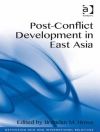Beneficial properties of graphitic carbon nitride (g CN) have been discovered in recent years during the promotion of its visible‐light‐driven photocatalytic activity for water splitting. Applications of g CN have flourished in such fields as renewable energy production and environmental remediation, while g CNs have been explored to serve as electrocatalysts, electronic and photoelectronic devices, non-volatile memory devices, anodes in lithium‐ion batteries, and platinum supports in polymer electrolyte fuel cells.
This book covers recent advances in the rational design and characterization of g CN nanostructures for energy and environmental remediation, and discusses achievements in fabrication approaches of g CN nanostructures using various chemical and physical approaches. It highlights recent advances in the theoretical and experimental development of novel multidimensional nanoarchitectonics of g CNs along with insight into catalytic energy production, energy storage, and environmental remediation. Practical applications and utilization of g CN based devices are also discussed.
With contributions from leading global researchers, this title will appeal to graduate students and researchers in nanoscience, chemistry, chemical engineering and materials science who are interested in developing new g CN materials or devices.
Table des matières
Recent Advances in the Controlled Design of One-dimensional Carbon Nitrides for Thermal CO Oxidation Reaction;
Graphitic Carbon Nitride-based Chemiluminescent and Electrochemiluminescent Sensors;
Template-based Fabrication of Porous Carbon Nitride Nanostructures for Electrochemical Energy Conversion;
Graphitic Carbon Nitride Nanostructures as Potent Catalysts for Water Splitting: Theoretical Insights;
Graphitic Carbon Nitride-polymer Hybrids: A Win–Win Combination with Advanced Properties for Different Applications;
Atomic and Molecular Functionalization of Graphitic Carbon Nitride for Solar Cell Applications;
Hybrid Graphitic Carbon Nitride (g CN)-based Devices for Energy Storage and Production;
Emerging Applications for Graphitic Carbon Nitride-based Materials: CO2 Reduction as a Case Study;
Combination of Carbon Nitride and Semiconductors for the Enhancement of the Photocatalytic Degradation of Organic Pollutants and Hydrogen Production
A propos de l’auteur
Dr. Aboubakr M. Abdullah is currently the Hydro/Qatalum Chair Professor at the Center for Advanced Materials at Qatar University since 2017. He has more than 26 years of experience in chemistry and materials science and engineering Research & Development, Industrial consultations, and project management since. He was awarded his bachelor’s and Master’s degrees in 1997 from Cairo University, Egypt and a Ph.D. degree from Pennsylvania State University, the USA in 2003. Besides his current position, he worked at Cairo University, Tokyo Institute of Technology, Calgary University, Egypt-Japan University of Science and Technology. He has published more than 100 peer-reviewed and 50 conference proceedings articles in the materials, energy, and environment research field in addition to one book chapter and filed and disclosed several intellectual properties. Furthermore, he has supervised many young professionals at the Master’s and Ph.D. levels. His research interests including but not limited to energy conversion, water treatment, photocatalysis, and corrosion science and engineering.












